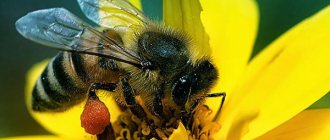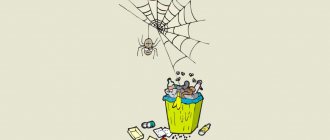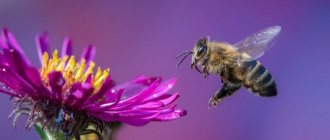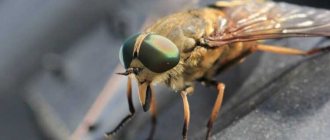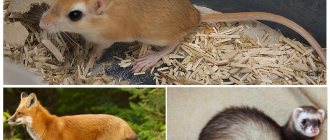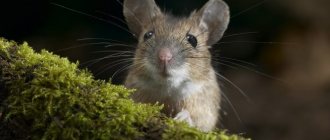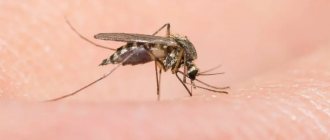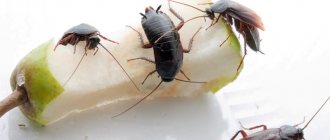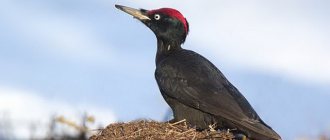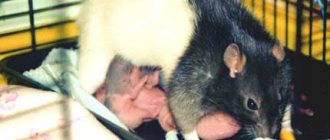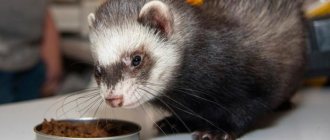Bee larvae are the initial stage of development of the brood or bee. Considering the fact that they eat a lot, their tiny body accumulates a huge amount of valuable elements. Therefore, they can be used to treat and prevent many diseases.
Bee larvae are considered a valuable product not only for obtaining adult bees, but also for use for medicinal purposes. Their fat body occupies 65% of the total mass. However, in further development the larvae consume their reserves of fat and energy.
What do bees eat?
Worker bees collect pollen and nectar from flowers of various plants. Pollen sticks directly to the bee's body, to all its hairs, including the eye hairs, nectar is transferred to the goiter, where it is partially converted into honey. An enzyme called invertase is produced in the worker's goiter, which separates nectar into cane and fruit sugar, but this product is not the final product. Along the way to the hive, part of the nectar, from 20 to 40%, is spent by the worker bee to restore strength, which constitutes its main nutrition.
Having reached the hive, the insect hangs a drop of partially processed nectar on the top of the honeycomb cell. If the nectar contains a large amount of water, it begins to evaporate quickly, which is why the bees have to ventilate their own home well. They do this by actively moving their wings. Fermentation processes continue to occur in the nectar at this time. With a moisture content of 20% in nectar, it is already almost ready-made honey.
Once this moisture threshold is reached, the worker bees seal the combs using a thin layer of wax secreted by their own body. In sealed honeycombs, honey reaches the required condition. Bees create this material in the summer to provide their colony with food for the winter. To feed their babies, bees use royal jelly, bee bread or bee bread, as well as liquefied honey. Royal jelly is given to the larvae in the first 3 days of their life after hatching from the eggs.
Did you know? It takes a nurse bee 2 minutes to supply food to one larva. 15 sec.
Milk is secreted by nurse bees (a separate class of worker bees) from special glands located near the mouth. Each of these bees takes care of several larvae of the same age. Bee bread is pollen compacted into honeycombs, subjected to lactic fermentation with the addition of bee saliva, drenched in honey and sealed with wax. The substance contains amino acids, enzymes and protein necessary for the full development of the brood.
A small part of the beebread is located in close proximity to the brood. The bulk of beebread reserves are located in the lower part of the nesting compartment. If in the spring there is a sufficient amount of beebread in the nest, the queen immediately begins to worm, which allows her to raise a full-fledged new offspring of worker bees before the first honey flow begins. If the beebread has been completely eaten over the winter and is not in the nest in the spring, the queen does not lay eggs, but waits for new pollen to appear.
Important! Fertilizing in spring and summer is carried out during the dry period.
A small number of cells located next to the brood are occupied by water. These reserves are not global, but they are enough to maintain optimal humidity in the hive and dilute the honey intended for feeding the larvae. The queen is also in the care of worker bees. Initially, she feeds on royal jelly, and a little later she begins to independently extract honey from the sealed honeycombs located in the hive. Young drones are fed by worker bees for the first 3 days with royal jelly, then with beebread and honey.
When the male matures, he begins to independently remove honey from the honeycombs. By collecting honey in its crop, the male can make 3-4 flights per day in the summer, returning home with a completely empty crop. In the summer, drones can feed not only on honey prepared by their own bee colony, but also fly into other people's hives to eat. In the summer, guard bees release all the drones into the hive indiscriminately, which gives them the opportunity to feed whenever they want.
You will be interested to know what royal jelly treats.
Nutrition of the queen bee
What does the queen bee eat? The individual that reproduces offspring consumes large quantities of royal jelly, which contains substances necessary for its life. Bees bring nectar to the hive, from which a substance containing proteins and lipids is released. This is what the queen bee feeds on.
During the period of egg laying, the queen’s nutrition is monitored not only by worker bees, who bring nectar to the hive, but also by others who obtain food specifically for the female. When swarming occurs, the female consumes simpler food - ordinary honey.
Preparatory work before feeding
Before applying fertilizing, you need to remove all frames with low-quality honey from the nests (honeydew, which crystallizes quickly). Before opening the nest, you need to calm the bees, for which you use smoke. The main thing is not to overdo it with the “sedative” - a large amount of smoke causes aggression in bees. It is better to choose a sunny, windless day for feeding.
Because in cloudy, windy or rainy weather, even with the help of smoke, it is difficult to restrain the aggression of insects. First, smoke is released into the entrance - literally 2-3 portions, then, when the insects have drunk a little honey, after about 10 minutes, remove the lid and fumigate the hive from above.
Difference between honey bees and wild bees
There are practically no wild bees left in nature, but in some areas of Bashkiria beekeepers still collect honey from wild bees - it is considered more useful and rich in microelements and minerals. Wild bees are very different from their descendants domesticated many centuries ago.
They:
- smaller in size;
- paler - their colors are not so bright;
- aggressive - they react to any interference by flying out of the hive a whole swarm of defenders who sting the uninvited guest. The consequences of such bites are very painful and can even lead to death;
- less susceptible to diseases, infections, parasites;
- able to tolerate lower temperatures than domestic bees.
They can survive severe frosts, while domestic bees require above-zero temperatures in winter. They settle in the hollows of old trees or stumps and actively use wax to build honeycombs in the shape of a “tongue”.
Watch a detailed video review of the body structure and habits of the honey bee from Viktor Fursov:
Little workers collect nutritious and tasty honey for people and help treat various diseases - from colds to rheumatism. Even dead, honey plants continue to help people - many useful medicines are made from dead bees (dried bee bodies). By caring for the hives and helping bee colonies spread, beekeepers not only provide themselves and customers with healthy beekeeping products, but also improve the ecology of the planet.
Rules and features of feeding bees
Feeding with sugar syrup is viewed with hostility by many domestic beekeepers, while foreign colleagues actively practice feeding with sugar.
Timely feeding makes it possible to:
- avoid swarming of bees during the non-sweeping period;
- eliminate problems with lack of food in winter;
- increase the strength of the bee colony before going into winter;
- carry out the prevention of diseases and parasites dangerous to honey bees.
Important! It is always necessary to clearly monitor which plants honey insects collect food from and adjust their diet. For example, rose hips, lupine and poppy produce only pollen.
Spring feeding begins as soon as the inhabitants of the apiary begin to fly out of the nest and fly around in search of food. In summer, feeding is carried out in mid-July - mid-August, when the flowers have only pollen and no nectar. And this naturally allows the bees to properly prepare sugar syrup and stock up on time for the winter. The optimal time to feed bees with sugar syrup before wintering is from August 25 to September 5. During this period, the weather is usually still warm, which makes it easier for bees to process sugar. In winter, feed is added as needed.
In total, there are 2 types of fertilizers, differing in purpose:
- stimulating;
- the main one, replacing food when there is no place to get nectar.
Depending on the type of feeding, the thickness of the syrup will differ. For the main feeding, a thicker mixture is used at the rate of 1 liter of water per 2 kg of sugar. Sugar is added to boiling water and stirred until completely dissolved. The mixture is cooled to a temperature of +35°C and then fed to the hives. To prepare liquid syrup, use a 1:1 ratio.
Important! The entire supply of honey cannot be left in the hive for the winter. Insects need free space to form a club.
You can dissolve sugar in a similar way by adding it to boiling water or leave the mixture in a well-lit place for the whole day, stirring occasionally. The food is placed in feeders. The most successful option that meets the quality and safety requirements is a wooden feeder, which looks like a flat box.
Its device involves the presence of 2 compartments:
- for feed;
- for bees to enter the feeder.
If you place food in deep containers, you can lose most of the swarm, because the bees will drown in the liquid.
Before use, the new feeder is doused with drying oil, and the joints are treated with wax. The feeder is placed on a frame directly above the bee nest. The gap, which is the entrance to the feeder, should be located above a place that is freely accessible to insects. For liquid food, you can use a regular jar closed with a plastic lid. Holes with a diameter of 0.8 mm are made in the lid. The jar is placed upside down in the hive. It is better to use a liter container - it will be more convenient to use.
About the dolls
This is the last stage of bee development before it becomes an adult.
But before the pupa appears, the “Egg” stage, the “larva” stage, and the “pre-pupa” stage must pass.
Pupae emerge from bee larvae on the 12th day. Until the pupae turn into real bees, they will molt six times. While the larva of the pupa spends time in sealed form, it does not eat anything, it only develops. When, finally, on the 21st day, she emerges from the pupa, having only managed to gnaw the cap of the signet, she has already lost half of her weight, and other bees are diligently feeding her. By the way, by the color of the pupa’s cap you can understand how soon the young bees will appear.
A day later, the young individual leaves the cell, immediately harnessing itself to work.
There are fundamental differences between a pupa and a larva and an adult bee.
Pupae differ from larvae in that they are motionless and do not eat, but in appearance they resemble an adult. But the pupa has features that are absent in the adult, these are spurs in three places on each pair of legs.
Specifics of winter feeding
Any invasions during the winter period are difficult for bees and put their lives at risk. In winter, it is quite difficult to conduct a full inspection of the nests and get a complete picture of the quantitative indicators of food. In this regard, feeding is being carried out for all families in which there was not enough food initially. Winter feeding is carried out only if wintering takes place in relatively warm conditions. The minimum temperature at which it is possible to open the hive is +2…+4°C.
When wintering outside, before feeding, the hives are moved to rooms where the air temperature is above 0°C. The most correct option is feeding with sugar syrup. Prepare it quite thick, add 2 kg of sugar to 1 liter of water. Brown honeycombs are filled with syrup; for weak families, only one half of the honeycomb is filled. The prepared honeycombs are placed directly to the bee club. It is better to carry out the procedure together.
Step-by-step instructions for feeding bees in winter:
- Remove the hive cover.
- Bend the canvas until the bees in the outer street become visible. At this time, you will need an assistant to illuminate all the frames with a red light.
- With quick, precise movements, move all the frames to the outermost street to make room for the frame with syrup.
- Place the frame directly next to the club and move everything back as it was.
Learn about the features of bees wintering in a barn.
With a good dense filling, the honeycomb can hold 1.5-2 kg of food, which will be enough for a month. After this period of time, fertilizing is carried out again if the warmth has not yet arrived. If the humidity in the hive is high enough, then feeding is carried out using candi. It is made from honey and sugar. The consistency of the candy should resemble a thick, plastic dough. You will need 1 kg of this feed for a month. The kandi is first wrapped in 1 layer of gauze.
It is also placed directly next to the swarm. Frames with food for the winter are placed at the top of the hive. In winter, the bees eat the stored products and move up. If frames with poorly filled combs are located in the central part, then in winter the club will begin to separate, scattering into different combs, which will lead to hypothermia of the hive. In winter, it is very important to add food frames on time.
Attention - honey appears
You probably noticed how complex the preparatory process is. Honey production couldn't be easier
The receiving bee is responsible for the formation of the honey mass, removing excess moisture from nectar (pollen). Ventilation of the evidence and evaporation of excess liquid from the honeycomb depends on it.
Noticing that a small portion of nectar has thickened, the bees take it to the empty honeycombs. Ripe honey, that is, honey in which the moisture content is less than 21%, rises in the tray, since it is covered with wax lids. Nectar mixed with bee secretions and oxygen gives rise to hydrolysis, which continues in the cells.
Nutritionists recommend consuming only mature honey.
How to calculate feed consumption
For a bee colony, 20–30 kg of honey should be left for the winter. Based on these calculations, they decide whether to introduce additional fertilizing. All 20-30 kg of honey products are not left in the hive - exactly as many frames are placed as there are honeycombs with bees.
We encourage you to learn more about honey bees.
The number of food frames directly depends on the strength of the bee colony:
- strong - 8–10 hundred;
- medium - 6 hundred;
- cores - 3-4 hundred.
Each honeycomb holds on average 1.5 kg of honey or syrup. Accordingly, if 8–10 honeycombs remain, 12–15 kg of honey remains in the hive. In this case, winter feeding will most likely not be required. You can add honeycombs with stored honey in early spring (late February - early March) to start the process of egg laying in the queen. To feed the brood and feed themselves in the spring, the bees will need 10–12 honeycombs, 2 of which should be with beebread. At the time of the first spring bribe, 4 kg of honey should remain in the hive.
Medicinal properties
Worms have amazing healing properties:
- increased sexual desire;
- reduction of harmful cholesterol in the blood;
- blood pressure regulation;
- restoration of strength and energy;
- increased performance;
- prevention of prostatitis, as well as adenoma;
- improve blood circulation and circulation.
In what cases is fertilizing not needed?
Feeding is not necessary if the insects have managed to stock up on a sufficient amount of high-quality honey - not crystallizing, not honeydew. In summer, if there are plants in the area that bloom for a long period, fertilizing with syrup will also not be necessary. If there is enough nectar, then by autumn the workers store honey in excess.
You might be interested to know about the lifespan of a bee.
Then feeding is carried out only at the beginning of September in order to increase the fertility of the queen and form a large strong colony with new worker bees. To properly organize the care of your apiary, you must first know what bees eat in the wild. Accurate calculations of feed and checking its quality can significantly reduce the loss of insects in winter.
General information
Bees are beneficial insects. They participate in the pollination of agricultural crops, produce useful products, which include tasty and healthy honey, healing propolis, wax and much more. What does a bee eat? The food for bees can be honey itself, nectar and beebread obtained from pollen. Everything that bees extract is deposited in wax cells. Pollen is a source of protein for insects, and nectar is a source of energy.
What do bees eat in nature? Wild insects of this species have a peculiarity: they choose for their residence those places where there are a sufficient number of flowering plants from which they can collect pollen. If a person, finding himself in the forest, discovers a nest of wild bees, there is no need to take away the entire supply of honey stored by insects for the winter. You can only take the surplus, 1/3 of the entire supply, otherwise the entire bee colony will die.
Who benefits from the buzzing of bees?
The benefits that the honey bee and the products of its activity bring have been talked about for a long time and a lot. But few people know that even the buzzing of bees is therapeutic.
So who benefits from listening to the buzzing of bees? What is its healing value?
The sound made by a bee occurs when it flaps its wings. By the way, almost 440 vibrations per second! It is these that our ears perceive as the buzzing of bees. A bee can buzz while sitting and do it completely purposefully. Because the buzzing of bees is also a way for insects to transmit information to each other.
But it is also one of the effective treatment methods. Beekeepers confidently claim that the buzzing of bees can cure a wide variety of diseases, even cancer.
For example, do you know that a boarding house has been created in Crimea, where they treat exclusively with beekeeping products? People come here to experience the method created by the entrepreneur, which is based on bee music, or the buzzing of bees.
Now you know exactly how useful the honey bee is, that everything emanating from it heals and heals, even the buzzing of bees.
